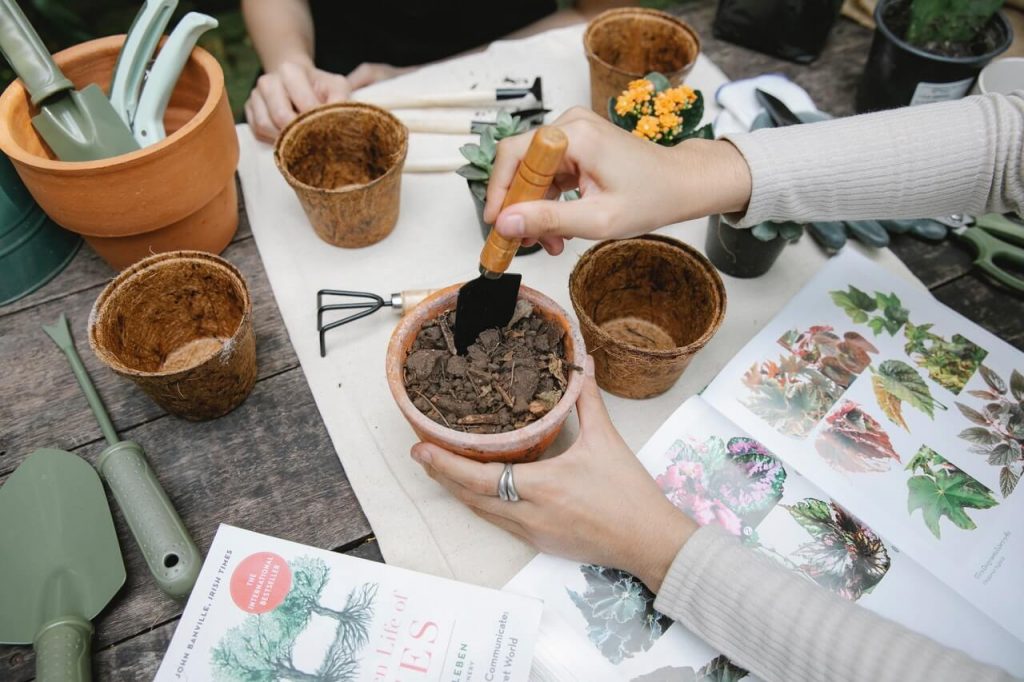If you’re a gardener, you’d very well know what soil pH is and what difference will it make when you decide to grow a plant on the soil that has acids or alkaline.
Like the organic matter wood ash and ashes, the soil has hydrogen ions concentration too. After deciding what kind of plant you want to grow, you’d need to know the hydrogen ions concentration of the soil to determine if your plant will get proper nutrients from the soil properties. This is where soil pH tests and the use of fertilizer come into play.
What is Soil pH?
Soil reaction is an indication of the soil acidity or alkalinity of soil and is measured in pH units, where pH stands for “Potential of Hydrogen” or “Concentration of Hydrogen.”
Soil pH is specifically defined as the negative logarithm of the hydrogen ions concentration in the soil. The scale of soil pH goes from 0 to 14 where pH 7 indicates a neutral point. It is a ‘reverse’ scale, i.e. soil with acids or organic acid has a low pH and a high hydrogen ion concentration. Therefore, at high alkaline pH values, the hydrogen ion concentration is low.
From pH 7 to 0, the soil is considered acid soil. The lower the number gets, the higher the soil acidity. pH 7 to 4 is considered alkaline or basic. The higher the number gets, the higher the alkalinity. It’s always indicated in a number or certain range preceded by soil pH, such as Soil pH: 2.5 – 4. This denotes it is extremely acid soil.
In higher rainfall areas the natural pH of soil ranges from 5 to 7, while in drier areas it ranges from 6.5 to 9. The areas that see seasonal farming may have an entirely different pH range from the area that is completely arid.
Why Does Soil pH exist?
Many of you may wonder, how does soil pH exists and where does it come from? Well, soil pH depends on the rock from which the soil was formed and how the weathering process acted on it. The rainfall, topography, heat, and vegetation can greatly change the soil pH.
Most of the time, the change in soil pH happens because of human activity. Some agricultural activities can accelerate the acidification process of the soil such as continuous irrigation and harvesting can increase soil acidity over time.
How does it affect the plants?
Soil pH mainly affects the number of nutrients and chemicals that are soluble in soil water, and there the number of nutrients available for plant growth. Nutrients such as Nitrogen, Phosphorus, Potassium, Calcium carbonate, Manganese, etc. help plants grow in their natural form.
When the soil pH is near neutral, most of the mineral nutrients are readily available to plants. When the soil is too acidic or alkaline, you will need to amend the soil with additional fertilizer with a higher or lower amount of certain minerals to allow the plant to easily absorb most amounts of nutrients from the soil.
The acidic soil has a greater amount of minerals which can often lead to mineral toxicity or nutrient deficiency in acid-loving plants. These toxicities could be aluminum toxicity, manganese toxicity, calcium carbonate deficiency, or magnesium deficiency. Acidic soil can also kill essential soil bacteria.
The alkaline soil has problems with nutrient deficiency including deficiency of zinc, copper, boron, and manganese. While extremely alkaline soil has may a high level of sodium and almost no other nutrients.
Soil pH can also have an effect on the activity of soil microorganisms such as fungi and bacteria. A pH reading that is too high or low will lead to a loss of these microorganisms, which will result in a less healthy soil overall.
How do you measure soil pH at home?
Knowing that your soil is probably alkaline or acidic isn’t enough. Experts suggest taking soil test reports on a regular basis to understand if you’d need fertilization.
One of the most efficient ways to determine soil pH is by a pH meter. It can be used indefinitely, requiring only occasional calibration.
- Take three or four samples, two to six inches deep. Try taking samples from different sites of the garden. Remove twigs and stones.
- Put the sample inside a bottle and mix it with water. It’s important to use water that is neutral-pH such as distilled water. Now, insert the test probe and wait about a minute. you should get a reading.
- If the pH registers as being lower than 7 that means your soil acidity is higher. Higher than 7? Your soil is alkaline. (Exactly 7 means your soil is neutral.)
Experts suggest staying away from less expensive meters because they can be off by as much as 1.5 points. Accurate models generally cost $50 to $70.
DIY Soil Testing Methods
These DIY methods recommended by the soil testing lab work well when you don’t readily have a soil pH test kit at home.
The Red Cabbage Method
Chop the cabbage into small pieces before boiling it in a pot of distilled water. Boil it for 10 minutes; you’d see violet-colored water. Remove the pot and strain out the cabbage.
Then, pour some of the water from the pot into a clear container. Add a spoonful of soil sample into the water and see how tic changes color. it the water turns pink, your soil acidity is greater. If it turns blue-green, is it alkaline?
The Vinegar/Baking Soda Method
Dig and collect soil samples from different sites. Be sure to remove twigs and stones. Next, place the soil solution into a clean glass container and add enough distilled water to turn it into the mud. Then add a cup of vinegar into it and stir slightly. If the soil fizzes, foams, or bubbles, your soil is alkaline.
If nothing happens, you can continue the same process with a different sample and then add 1/2 cup of baking soda into the solution and stir it slightly. If the soil fizzes, foams, or bubbles, your soil is acidic.
How can you fertilize your soil to suit the requirement of plants?
Each plant has a different mineral requirement. Some plants may require more amount of Nitrogen to grow lengthier and strong, while others require more Phosphorus in order to grow healthier and full leaves and fruits.
Some nutrients cannot be efficiently absorbed by plant roots if soil pH is too high. If the pH is too low, the nutrients may be taken up too efficiently. The excess nutrients cannot be processed fast enough and overload a plant’s system causing it to die.
Acid-loving plants like Azaleas, Rhododendrons, Hydrangea, Camellias, and Blueberries find acidic soil nurturing. Olive, Oleander, and Pomegranate perform well in alkaline soil.
Lime and Dolomitic Limestone
Natural agents like liming material, aglime (agricultural lime), and dolomite lime can help to increase the pH level of the soil. You can readily find aglime and liming material in the ground or powdered form. Ground limestone or Grounded liming material is slightly less potent than the powdered form. The amount of time needed may depend on your garden soil’s texture. if your soil is more clay than other sandy soil, you’d need more lime or calcium carbonate.
Common Sulfur
Common sulfur and its variants like ferrous sulfate, ammonium sulfate, and aluminum sulfate are great in lowering the soil pH. As an option, you can help lower the soil pH over time by regularly applying organic matters like compost and manure. Using Sulfuric acid can also help in lowering the soil pH range.
NPK Requirement for your garden soil
The NPK requirement in the soil depends on the availability of plants you want to grow. Before a nutrient is absorbed by plants, you must dissolve it in the soil. Most minerals and essential plant nutrients are more soluble or available in acid soils than in neutral or slightly alkaline soils.
The mobility of nutrient materials in soil microbes strongly differs. Nitrogen and Potassium are water-soluble and are mobile in any soil type while Phosphorus is most available in soil but is never readily soluble.
- Nitrogen fertilizer (N) helps for leaf growth and enhances the rich green color in your garden.
- Phosphorus (P) assists in the development of root growth, flower, seeds, and fruits.
- Potassium (K) helps for strong stem growth and movement of water in plants.
Other than these, plants will require the optimum amount of nutrient availability from organic matters such as calcium carbonate, magnesium, sulfur, and micronutrients (manganese, iron, copper, silicon, etc.)
After doing the soil pH test, you can start amending your soil type with appropriate units of fertilizing components. The fertilizer label will help you understand the application rate of N, P, or K in the fertilizer. 20-10-20 means more Nitrogen and Potassium compared to Phosphorus. 10-10-10 means an equal proportion of Nitrogen, Potassium, and Phosphorus.
If you aren’t sure about what proportion of plant nutrients to use in your soil, you should always get in touch with a soil fertility expert to understand more about soil bacteria, soil types, soil conditions, and soil amendments.


Leave a Reply